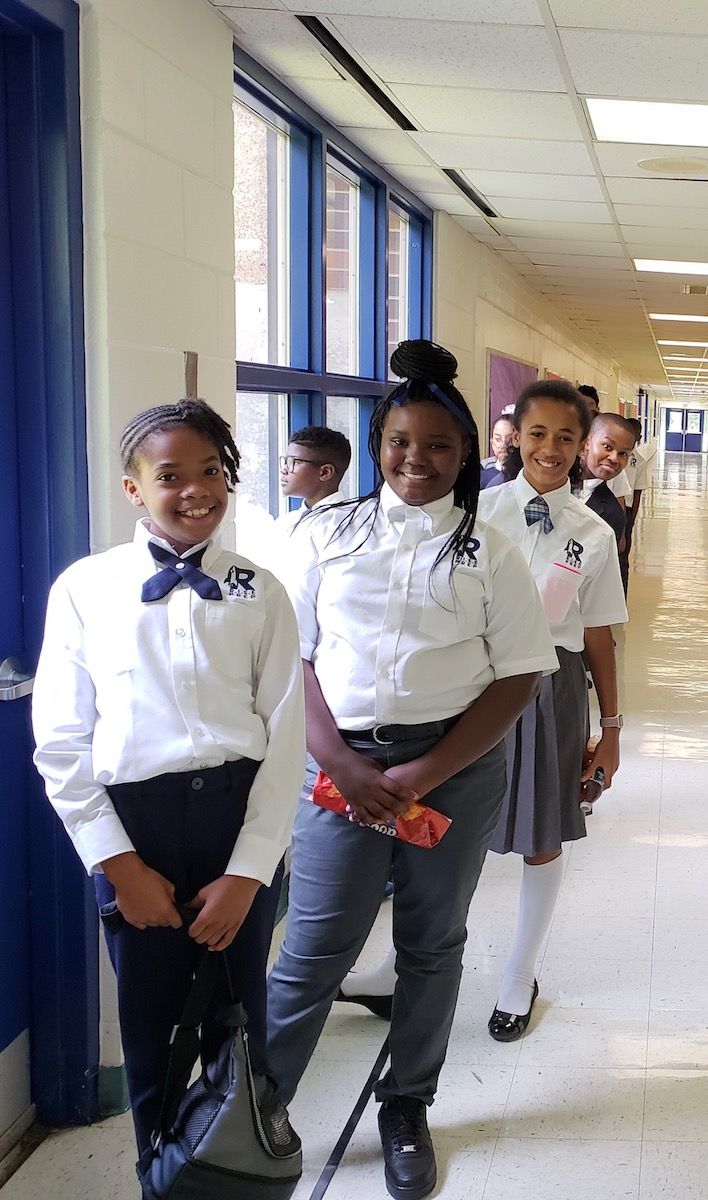From the fiery debate about critical race theory to stormy school board meetings and the uncertainty of schooling in a deadly pandemic, the issue of education is front and center in the public discourse. Recently, amid growing social unrest, eight CDFIs have teamed up to make racial equity in education a top priority.
The CDFI Racial Equity Collaborative on Education, led by the Self-Help Credit Union, was initially founded in 2018 and began rolling out resources to help lenders evaluate schools’ commitments to equitable practices the following year. The CDFIs, which include the Reinvestment Fund, Low Income Investment Fund and IFF, pledged to focus lending, mostly for facility enhancement, to K-12 public and charter schools that exhibit practices and results that enhance racial equity in their schools. It’s still early in the initiative, but the CDFIs and some school principals are encouraged by the collaborative energy of the program and progress so far.
For some CDFIs and educators, the initiative couldn’t be more urgent. As with almost every aspect of American life, the pandemic has revealed the disparity in resources between schools made up of different races and classes—and it’s high time, they say, for a reimaging of public education and schools, especially regarding race.
One of the receivers of a loan through members of the collaborative is The RISE Schools, a charter school network in metro Atlanta. Their rather sizable $4.8 million loan in spring of this year will help them expand school facilities for existing students and “students with exceptionalities,” says Dr. Davion Lewis, executive director of RISE. The investment, he says, “will be a gamechanger for us.”
In education, systematic racism might manifest itself in undue or excessive disciplinary practices for Black and Brown students compared with their white peers or excessive dropout rates, notes Khaliff Davis, senior director, Southeast at Reinvestment Fund, headquartered in Philadelphia.
“School discipline is a hot topic in the education space,” Davis says. “Research shows that students of color are more likely to be (more) disciplined in school settings than white peers. We think holistically about the whole child—are the schools implementing practices that aren’t punitive and excessive? What training do they provide for the staff to make sure discipline is restorative and not damaging?”
But figuring out how to measure a concept as wide-ranging as racial equity to make sound lending decisions is a challenge. The CDFIs, well, had to go to school and learn from educational consultants Village of Wisdom, an educational nonprofit, we are (working to extend anti-racist education), and tech-based educational equity platform Discriminology. These consultants developed REM—Racial Equity Matrix—a tool outlining 10 qualitative data points or indicators designed to, according to Davis, “develop a framework for evaluating schools’ commitments to creating equitable learning environments.”
REM essentially tries to codify practices around which CDFIs can debate and formulate underwriting policies in considering loans to schools. REM includes topics such as parent engagement, teacher and student recruitment, and culturally relevant curriculums, which the REM website describes as providing materials “to celebrate and affirm the intellectual contributions of people of color.”
“It’s not meant to be punitive” toward schools, stresses Jenny Boyts, director of social services at IFF, a Chicago-based CDFI. “In all our decisions, we thrive toward investing in transformational projects, and in the school space, these indicators help us define what transformational looks like.”
Dr. Lewis thinks his seven-year-old school checks most of the boxes that make for a transformational investment and is true to the spirit and policies of the racial equity initiative.

RISE students (Photo courtesy of RISE Schools)
“I don’t know how you can increase racial equity in education unless you’re supporting schools like ours,” he says.
The RISE Schools teach more than 800 students in elementary and middle schools and they are looking to add a high school. Reinvestment Fund, one of the two CDFIs in the collaborative that provided the $4.8 million, might help with that expansion as well. “Both parties hope the partnership continues,” allows Dr. Lewis.
The Reinvestment Fund, which has invested more than $500 million to K-12 schools over the past two decades, is already incorporating a racial equity lens across its entire lending portfolio, a practice that Boyts at IFF is also working toward.
In essence, the collaborative has formed a high-powered study group to try to create a socially relevant formula for financing schools that not only produces positive grades for students and communities, but also for CDFIs’ portfolios.
“Over the past two years, we’ve created a safe space to talk and discuss how to apply racial equity in lending,” says Chelsey Hurt, charter school program associate at Durham, N.C.-based Self-Help Credit Union. “We are still in the learning phase.”

This story is part of our series, CDFI Futures, which explores the community development finance industry through the lenses of equity, public policy and inclusive community development. The series is generously supported by Partners for the Common Good. Sign up for PCG’s CapNexus newsletter at capnexus.org.
Christopher C. Williams is a New Jersey-based freelance financial writer. He worked for many years with Dow Jones Newswires and Barron’s Financial Weekly and has contributed to publications including the Wall Street Journal, The New York Times and Essence magazine. He focuses on the intersection of business, economic equity and racial justice.


_(1)_600_350_80_s_c1.JPG)






_920_518_600_350_80_s_c1.jpg)






